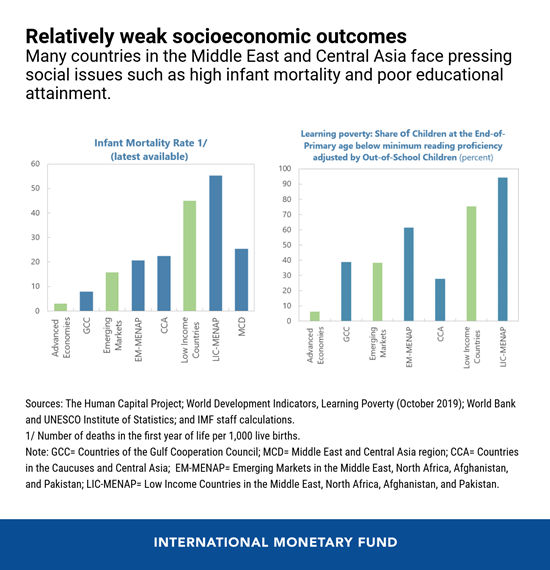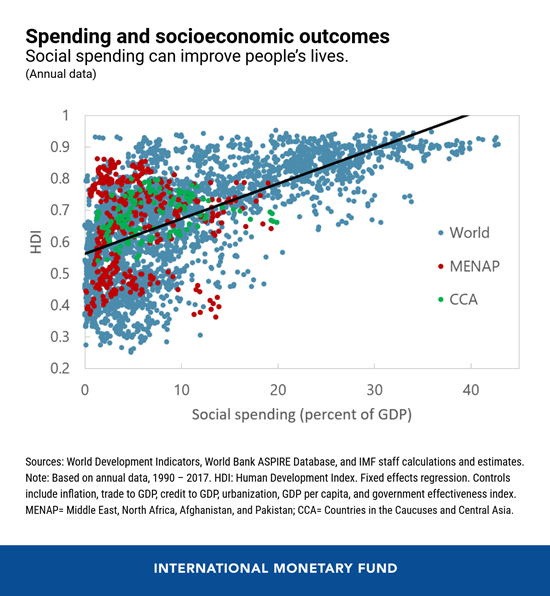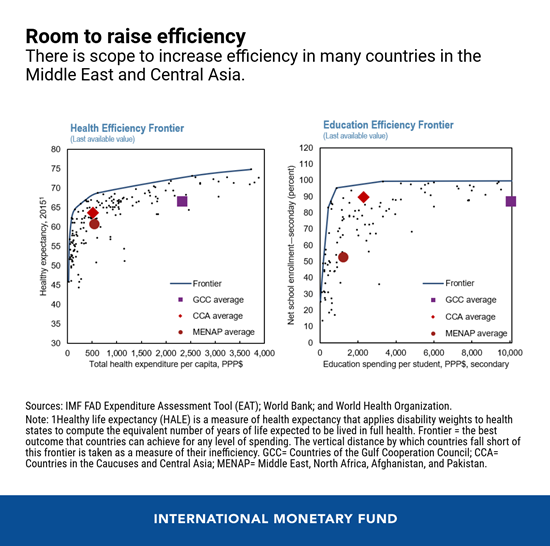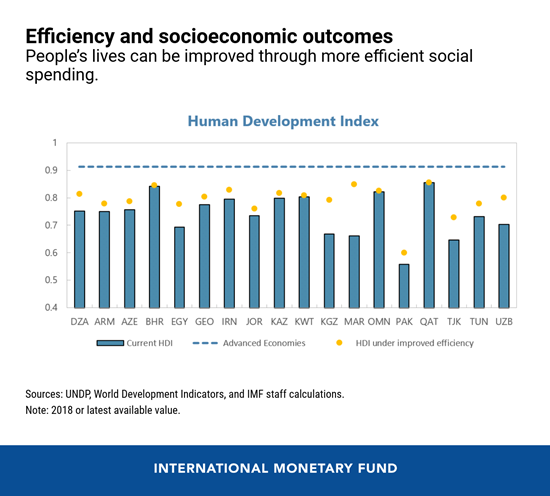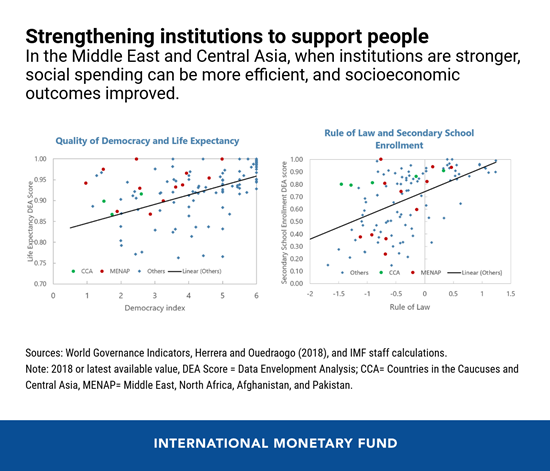
Boys returning home from school in Nabeul, Tunisia. Efficient social spending is key for strengthening education and boosting socioeconomic outcomes. (photo: Lipowski/iStock by Getty Images)
Six Charts on Social Spending in the Middle East and Central Asia
September 29, 2020
Higher and more efficient social spending can significantly improve socioeconomic outcomes and help promote inclusive growth.
Related Links
Education, health, and poverty indicators in the Middle East and Central Asia have improved substantially over the past two decades. The rate of progress, however, has slowed, and these indicators remain weaker than in global peers. The level of social spending also is lower, though to a lesser degree.
The COVID-19 pandemic has brought the challenge of improving socioeconomic outcomes into stark relief. Our new paper finds that raising the level of social spending and improving the efficiency of that spending (getting more out from what’s put in) can each play an important role. The latter critically depends on strengthening institutions and improving governance and transparency.
Our main findings are illustrated in the following six charts.
- Socioeconomic outcomes are weaker than in other regions. This holds across sub-regional country groupings and for indicators of education, health, and poverty/inequality.
- Social spending is also lower than in other regions, though to a lesser degree. This is true across country groupings and regardless of whether one looks at per capita spending or spending relative to GDP.
- Social spending can improve socioeconomic outcomes. We find a positive and statistically significant relationship between social spending and socioeconomic outcomes, proxied in this chart by the Human Development Index.
- The efficiency of social spending is relatively low in the Middle East and Central Asia. Countries in the region have room to improve in terms of the effectiveness with which social spending delivers improvements in socioeconomic outcomes.
- Even without increasing outlays, boosting the efficiency of social spending would help significantly improve socioeconomic outcomes. If the region could bring its social spending efficiency to the average efficiency level of advanced economies, even without any extra spending, it could close one-third of the Human Development Index outcome gap.
- Stronger institutions are critical to raising spending efficiency. There is a strong correlation between spending efficiency and indicators of institutional quality, such as government effectiveness, the control of corruption, and the rule of law. Stronger transparency and accountability over the use of public resources minimizes wasteful spending and promotes efficiency.








